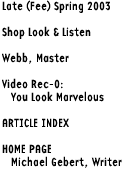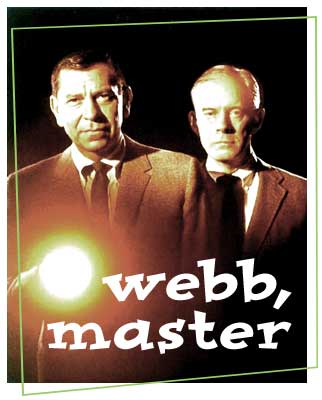


We all know the staccato Dragnet speaking rhythm (“I guess you forgot one thing.” “What’s that, officer man?” “It’s against The Law.”) but it’s a surprise to see that it’s matched in the editing rhythm— in an era of park-the-camera two-shots, Webb pingpongs on every line.
And when you look at Webb’s images you realize that the world really was black and white to him—shot after shot is pepper-haired man in gray suit against taupe wall. When a suspicious swinger’s red flocked wallpaper suddenly appears, it hits you the way the 60s must have hit Webb.
Webb gave his actors one line at a time, so they’d be so preoccupied with remembering it that they wouldn’t attempt to act— thus producing the flatly realistic Dragnet dialogue style. His fascination with the seedy side of LA, the bars and cheap apartments where losers wash up and come in contact with the law, is unique in TV and matched only by Charles Bukowski in literature— though Webb’s unsympathetic take on it isn’t Beat, it’s beat cop.
In short, Dragnet’s sublime squareness was the result of a conscious aesthetic. That doesn’t make it good, you say. Maybe not, but there’s a reason Dragnet gets remade and parodied and Hawaii 5-0, say, doesn’t. To a formulaic genre, Webb brought a personal style that expressed his worldview perfectly. We should all aim to bring as much to our beats.